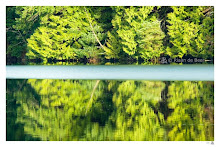
Welcome to my photography blog where I will discuss how I made some of images and any photography related issues that interest me.
By way of introduction I would like to discuss an image I took Aug 15 of 2007 and which is one of my current favourites. I took this image with my Pentax K10D with the 16-45 F4.5 wide angle lens.
The image was captured at Tunstal Bay on Bowen Island. Tunstal is located on the Western side of coastline and is one of my favourite beaches to photograph. Bowen Island is located in the Howe Sound in the Pacific Ocean , but the water is mostly almost lake-like because of the sheltered location. On this particular day there was quite a strong wind which had managed to whip up about 18" (45cm) high waves. The beach is littered with driftwood from the surrounding forests and I knew that there would be some interesting action on the beach between the water and the wood. I waited for the end of the day, hoping for an interesting sunset. My plan was to get some wide angle shots of the beach and driftwood in the foreground and the sunset in the distance.
When I got there I realized that I was out of luck for a dramatic sunset. The wind had swept the sky clear of all clouds and I was confronted with a dark blue sky with the sun on the horizon.
However the location of the driftwood on the beach had a lot of potential. The interesting thing about driftwood is that it creates a new scene every day as the tides jumble them around.
The log in the foreground of the image was being lifted and rocked by the waves as the tide was coming in. I ended up positioning my tripod in the ocean and I took my shoes of and went into the water up to about my knees. I switched my Pentax to the infrared remote shutter to avoid camera shake.
In order to capture the movement of the water I needed a slow shutter speed. I added the polarizing filter to stop the lens down by 2 stops. It was a bright and sunny day and although the sun was already on the horizon and hitting the scene almost horizontally, I still had a real struggle to get my shutter speed slow enough. The Light was shifting fast and as it got darker I got closer to my desired shutter speed of more than 1 second. I had to start to compensate the exposure as it got darker to stop the camera's light meter from artificially lightening the scene to 18% grey
The EXIF data from the camera indicates that I took the image at 8:16PM with a focal range of 16mm at F22 with a shutter speed of 1.3 seconds and exposure compensation of -1 stop.
To get the right effect I had to time my shutter to match the rhythm of the waves. I took about 30 exposures before I took the final one. As I clicked the shutter and watched a particularly large wave crash over the log, I had that sudden feeling where I just knew I got the shot I was looking for.


